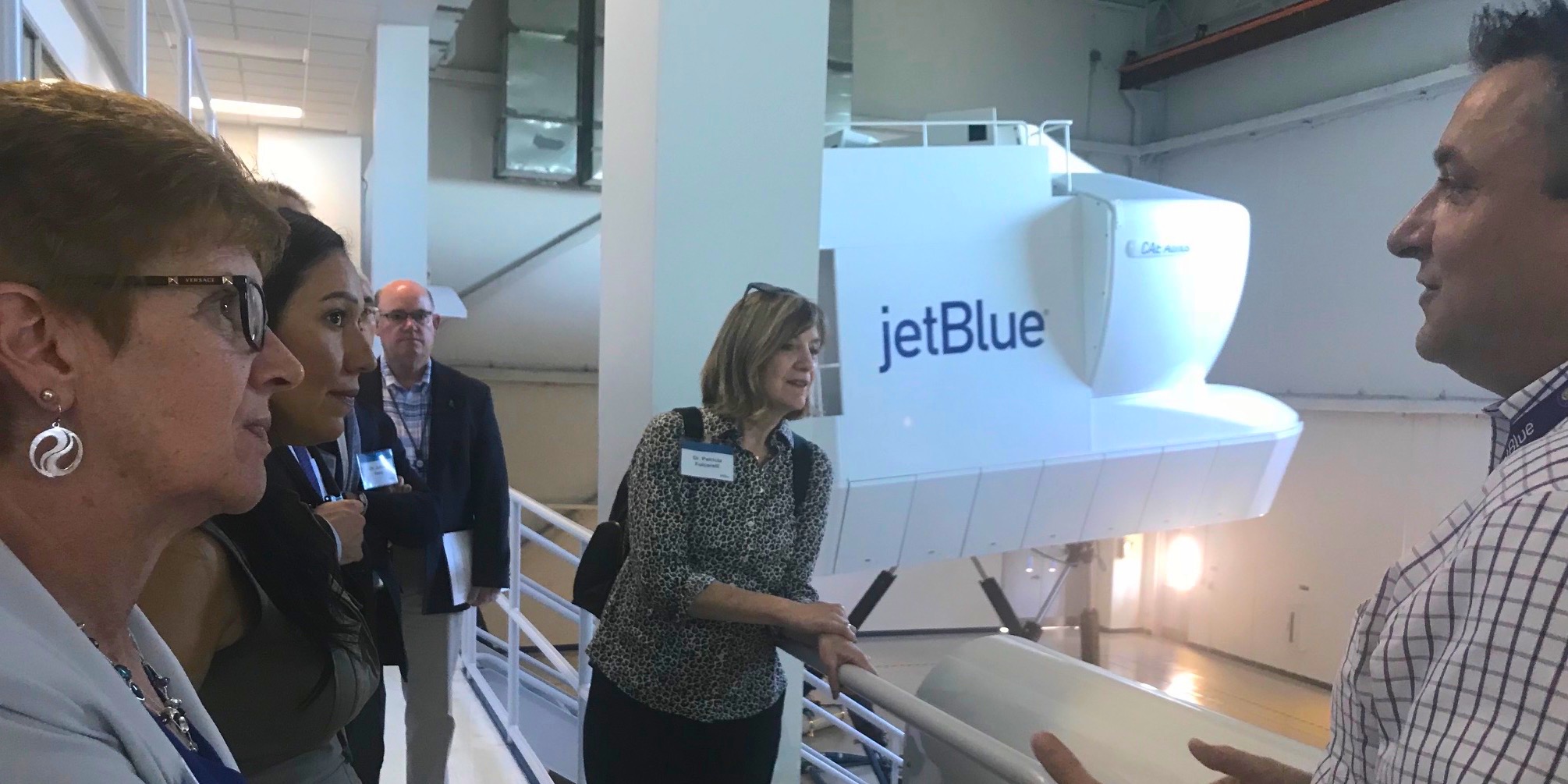
Cost calculation vs cost awareness
FEATURE – As inflation bites, the author offers us an insightful take into what it really means to understand a company’s costs. Hint, it doesn’t involve passing them on to customers.
Words: Michael Ballé
Inflation is back. The price of some components has increased from 20% to 80%, from what I’m told. Companies are scrambling to secure sourcing for critical ingredients in disrupted supply chains, which often comes at a significant cost from, say, taking a spot offer from a broker or shipping parts by plane (because all the sea routes are saturated and ships are stuck in front of a harbor somewhere).
Component cost is a cost everyone understands. If I build a widget that needs a gizmo and the cost of this part doubles, I can easily calculate the cost increase per unit and try to pass it on to my customers, as most companies I know are busy doing. Or can I? Most businesses have accounting models that calculate a cost per product, per unit. This is hardly ever a matter of debate. Calculating costs is what accountancy does.
The trouble is that a cost is rarely an expense. An expense is what we see on the gemba: we pay someone for something. Cost is an abstraction. For instance, think of the expense of purchasing a new machine, say for $50,000, to make products. How are you going to calculate the cost that goes into the product from “renting” the machine? For starters, the value of this machine will depreciate over the years. Secondly, the cost of this piece of equipment that can be attributed to one product depends on what else is going on. If the machine is only used 10% of the time because that’s all that the product needs and we have nothing else to run through it, should the full cost of the machine be carried by the product? Or only 10%?
When costing a product, there’s an easy part: direct labor and direct materials where you buy what you use, per product. Then, there’s a hard part: manufacturing overhead. To attribute indirect costs to a product, you add up all your expenses (minus those that are directly attributable to the product) and then divide them by the number of units produced.
But then, what if product B used more machine time than product A? Well, accountants will then come up with a ratio of time used and correct the first estimation accordingly. But what about the change-over time from producing A to producing B? And what about the rest of the time when the machine sits idle? Also, what about the increase in change-over time if we add a third product C on this same machine? Assuming C is using available time on the equipment, the cost attributable to A and B (previously unutilized time) should be lower, but the cost of change-overs will increase, and maybe the number of people needed to schedule, assist and support these changes. It also probably means more parts to hold in WIP inventory, more space to store them, more people to move them around.
A natural law of minds is that we all narrow down problems to the part that we understand and ignore the rest. Managers I discuss costs with on the shop floor are usually at ease with materials and component costs. They can tell me how much a part costs, or a ton of powder, etc. They also have strategies to lower these costs, such as getting discounts for volume, finding cheaper suppliers, and so on. When prices go up, as they are doing now, they can immediately estimate what they should try to pass on to their customers in the form of a price increase.
Managers also have a clear idea of direct labor costs. They have a cost per hour in mind and can easily calculate how many people are needed to produce how many widgets in one hour. They also have strategies to deal with direct labor costs, by either contracting the part out, automating the work, or looking into the balance of “value added/non-value added” work and trying to optimize the work content. All of this is familiar ground.
But what about overhead costs?
Overhead costs vary greatly across industries. The numbers I’ve come across can vary from 10 to 15% in a large-scale parts producing factory up to 50 or 60% in software and services, or biotech and pharma. Truth is, it’s hard to get a consistent answer even from people in the same plant. I was taught to consider overhead costs on average as 35% percent of the unit cost, but I know this is complete fiction.
Managers focus on direct costs because they can count them (close to expenses) and, in doing so, feel like they can control them. In fact, these are the least controllable costs because you have to buy materials at market price, components at the price suppliers will sell them at, and pay people the normal wage expected in the country or region your factory is located in. The one thing you can do on direct costs is reducing scrap and rework. The rest, try as you may, is largely out of your hands.
Indeed, overhead costs are rarely considered for cost reduction because they are hard to grasp. Sure, accounting has some attribution rules that translate the overhead costs into the unit price, but these are seldom precisely budgeted – no one understands them intuitively. For instance, most strategies to reduce direct labor costs, such as farming out the part of replacing operators with a robot, will increase overhead costs. When you purchase a part in, you can rarely reduce the equivalent surface of your factory or do something else with the machinery (yes, accounting will argue they are fully depreciated, but this is still valuable production capacity). When you install a robot, what will you charge the product for its use and maintenance?
Go to your gemba right now, look around and imagine that you put all of your production machines next to each other. Every time I do this mental experiment with an executive, we end up with an estimate of 10% to 20% of the surface. Why are plants so large? Because work-in-process needs to be stored and moved. What if we’re considering renting the space to products by the squared meter? 80% reduction of your 35% overhead cost would be a 28% reduction of your unit cost – which is what I’ve seen Toyota achieve at its suppliers’.
In lean, costs are not there to be calculated, but to be reduced. But how? If we don’t know how to calculate costs, how can we reduce them? The answer is kaizen. First, we can clarify the cost structure of a product in our minds:

Then we can think of typical wastes occurring at each level:

Then, we can think of the usual kaizen activities:

By running these exercises, you can distinguish good situations from poor one. It won’t help with accounting calculations, but it will reveal the gap between the true potential (best repeatable results) and what happens the rest of the time. If you apply the true potential (what you know you can physically achieve) to the rest of the plant, every day, you now have an achievable gap you can seek to reduce. In other words, a kaizen budget.
The point of such a budget is not to commit to paper results so your manager can hold it over your head in the common “give it to me or else” fashion. The real purpose of scoping such a budget is to steer your exploration of what real costs are. By practicing and encouraging kaizen with a cost target in mind you will, at the gemba, move your understanding of costs closer to real expenses and away from accounting allocation, thus reducing attribution errors.
When looking for a lost key, we all find it hard to move away from the light of the lamppost and search the unlit areas – where we have greater chances to find what we look for. The cost accounting system is the light from the lamppost. It highlights some aspects of costs and underplays others. It introduces massive calculation biases (such as minimizing the cost impact of holding inventory or over-emphasizing the importance of direct labor costs) that skew every management decision about Return on Investment. Truly understanding costs means developing our own gemba-based intuitive feel for ROA – Return on Assets – as recommended by Nate Furuta in his outstanding book Welcome Problems, Find Success.

My father’s sensei used to say that cost reduction was people development. He did not mean line-by-line control to impose accounting’s calculations on operations, but cost elimination from active kaizen to develop one’s own cost awareness – a deeper, truer sense of what costs really are – needed to truly enhance value.
As costs balances are shifting with the inflexion point of globalization, the tragic war in Ukraine, and rising interest rates, we should strive to go beyond scrambling to pass our cost increase on to our customers in the form of price increases and, instead, respond to these challenges by opening up our minds to a deeper understanding of costs – from the gemba, through practicing kaizen.
THE AUTHOR

Read more


INTERVIEW - Thanks to strong leadership support and an effective system to partner with private sector firms, Washington State is proving how successful lean production principles can be in a government setting.


CASE STUDY – An Australian university has been applying lean to streamline and improve its processes, discovering along the way how big a change the methodology can affect in the organization's culture.


FEATURE – A situation that would be unthinkable in a sports context is an every-day occurrence in many of our organizations. Should we change our way of thinking about our machinery?


FEATURE – In a bid to find inspiration and new ideas to achieve excellent outcomes in patient safety, a group from a Boston hospital flew to Orlando to visit JetBlue Airways.

